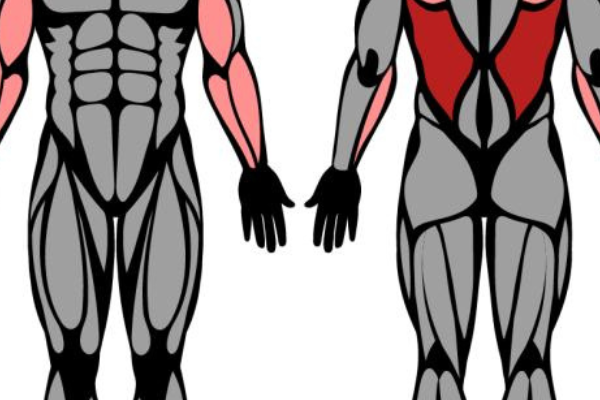
Exercise is one of the most effective ways to improve cardiovascular health. According to numerous studies, regular physical activity can help prevent heart disease and stroke, lower blood pressure, improve circulation, and even reduce stress and anxiety. In this comprehensive guide, we will explore the impacts of exercise on the cardiovascular system and provide actionable tips for starting or enhancing an exercise regimen targeting better heart health.
How Exercise Improves Heart Health
Exercise improves cardiovascular health in a variety of interconnecting ways:
Strengthens the Heart Muscle
The heart is a muscle, and like any other muscle in the body, its performance can be improved with exercise. Aerobic activities that elevate your heart rate for extended periods of time, like walking, jogging, cycling, or swimming, force the heart to work harder to pump oxygenated blood throughout the body. Over time, this increased workload causes the heart muscle to strengthen and become more efficient. A stronger heart can pump more blood with less effort, allowing it to better meet the demands of daily life.
Improves Blood Circulation
Regular exercise causes blood vessels to expand and relax, which improves overall blood flow and circulation. Activities like running or strength training cause short bursts of higher blood pressure, while the periods of rest in between cause blood vessels to dilate. Over time, this process of vasodilation allows more blood to flow through the vessels to supply the heart and other muscles with oxygen and nutrients. Better circulation reduces the workload on the heart.
Reduces Blood Pressure
Studies consistently show aerobic activity can help reduce blood pressure in those with hypertension. Exercise helps blood vessels dilate and expand, which lowers resistance and allows blood to flow more freely. Over time, the force exerted on arterial walls decreases, which directly lowers blood pressure. For most people, 120/80 mmHg is considered an optimal blood pressure range, but levels can vary depending on age, fitness level, and health conditions. Checking with a doctor to determine a healthy target blood pressure before beginning an exercise regimen is recommended.
Manages Weight and Body Composition
Being overweight or obese significantly raises the risks of heart attack, stroke, and other cardiovascular diseases. Exercise helps burn calories and shed excess fat, allowing people to achieve and maintain a healthy body weight. Less body fat also means lower levels of substances released by fat cells that can damage blood vessels and cause inflammation. Managing weight through diet and exercise takes significant strain off the cardiovascular system.
Regulates Blood Sugar and Cholesterol
Exercise helps regulate blood sugar levels and improves the body’s use of insulin, which allows better management of type 2 diabetes. Activities that build endurance, strength, and flexibility can also help lower LDL (bad) cholesterol while raising HDL (good) cholesterol. Keeping blood sugar, LDL, and HDL at optimal levels reduces the likelihood of atherosclerosis (plaque build-up in arteries), heart attacks, strokes, and other cardiovascular events.
Reduces Stress and Anxiety
Mental health and heart health are closely intertwined. Stress causes the body to release cortisol and adrenaline, which over time can damage blood vessels and arteries. Exercise boosts the production of endorphins, chemicals that improve mood and reduce perceptions of stress or anxiety. As little as 5-10 minutes of aerobic activity can provide these benefits. By cutting stress and improving mental wellbeing, exercise protects cardiovascular health.
Types of Cardiovascular Exercise
Many forms of exercise can benefit the heart, but aerobic activities, also called “cardio” exercises, are particularly effective for boosting cardiovascular health. These activities elevate breathing and heart rate for sustained periods by continuously contracting major muscle groups.
Some excellent choices for improving cardiovascular fitness include:
Walking
Brisk walking at least 30 minutes per day provides powerful cardiovascular benefits and can be done almost anywhere by nearly anyone. Those just beginning an exercise routine can start slow with short, daily walks and gradually build endurance. Mixing uphill terrain, short bursts of jogging, or wearing weights on the ankles or wrists can increase intensity.
Running
Running is high-intensity cardio that burns calories quickly while building strong leg and core muscles. Varying speed or distance keeps the cardiovascular system working hard. Those new to running should begin with short segments of running mixed with walking to allow the body to adapt to the stress and avoid overuse injuries.
Cycling
Cycling builds leg strength while providing low-impact cardio. Varying terrain, distance, pace, and resistance level allows for customization of workout intensity. Recumbent bikes or indoor cycling classes can be lower stress on joints for those with existing health conditions. Always wear a helmet when cycling.
Swimming
A highly aerobic activity that works all major muscle groups with minimal joint stress. Water provides natural resistance to build strength and endurance. Swimming works the cardiovascular system without the repetitive impact stress of activities like running or jumping. It’s an excellent option for those with pre-existing injuries or mobility limitations.
Rowing
Rowing machines provide an intense cardio and strength training workout by working muscles throughout the body. The smooth, gliding rowing motion is low-impact while still elevating heart rate and cardio endurance. Rowing works muscle groups not hit by activities like biking or running, enhancing overall fitness.
Jumping Rope
A surprising and portable cardio workout, jumping rope forces the heart to work hard to move blood to the leg and core muscles. Just 5-10 minutes of rhythmic jumping provides great cardiovascular benefits. Beginners can start with short intervals of low jumps mixed with rest periods to allow the body to adapt.
Plyometric Training
Also called jump training, plyometric exercises like hopping, bounding, and box jumps force muscles to exert maximum force in short bursts. These explosive movements elevate heart rate and blood pressure, increasing cardiovascular strength and endurance. It’s essential to start slow and master proper landing form to prevent injury.
Circuit Training
Circuit training combines aerobic activity with resistance or bodyweight training, providing comprehensive cardiovascular and strength benefits. Moving from station to station with minimal rest in between keeps the heart rate elevated for sustained cardio training. Circuit training also builds muscular endurance critical for cardiovascular health.
The key is choosing activities you enjoy and will stick with long term. Any form of moderate exercise sustained for at least 30-60 minutes per session can improve cardiovascular health. But always check with a doctor before beginning a new exercise program.
Additional Lifestyle Changes
While exercise is critical, supporting cardiovascular wellness requires a holistic approach addressing other aspects of health and wellbeing. Here are some additional lifestyle changes worth considering:
Healthy Diet
Eat a balanced diet focused on whole foods like vegetables, fruits, nuts and seeds, whole grains, plant-based protein, and fish. Limit saturated fat, salt, processed carbs, and red meat. Stay hydrated by drinking water throughout the day. Manage portions to maintain a healthy weight.
Stress Management
Try meditation, yoga, deep breathing, or journaling to calm the body’s stress response. Set boundaries and learn to say no to avoid burnout. Social connection, laughter, affection, and community service can also lower stress by releasing feel-good chemicals. Get enough sleep nightly.
Smoking and Vaping Cessation
Smoking significantly increases the risk of cardiovascular disease. Quitting smoking provides immediate and long-term heart health benefits. Be patient during the quitting process and use resources like counseling, nicotine patches or gum, prescription meds, or support groups to overcome cravings.
Limit Alcohol Intake
Moderate alcohol intake may provide some cardiovascular benefits, but excessive drinking can damage the heart muscle and disrupt heartbeat rhythm. Follow recommended limits – no more than 1 drink daily for women and 2 for men. Allow days without alcohol each week to avoid dependence or tolerance.
Small, sustainable changes to daily habits and lifestyle make the most significant long-term impact on heart health. Regular exercise serves as a foundation while positive diet and stress management reinforce cardiovascular wellness. With a comprehensive approach, people of all ages and abilities can improve heart health.




